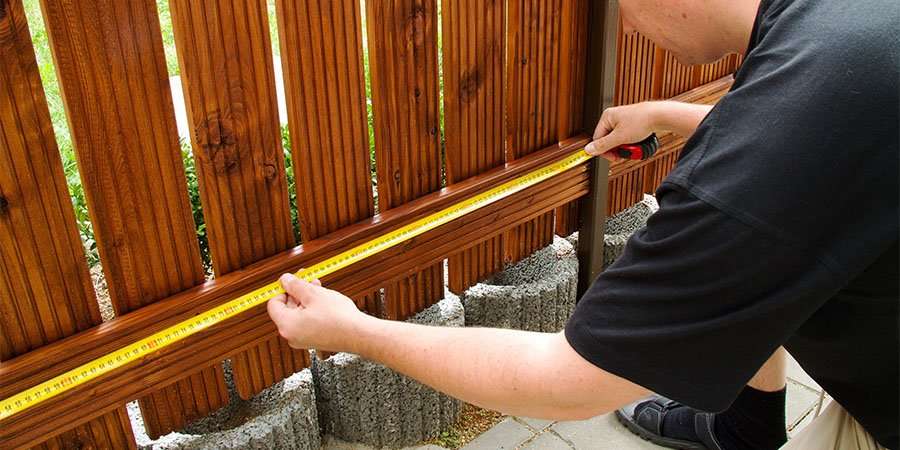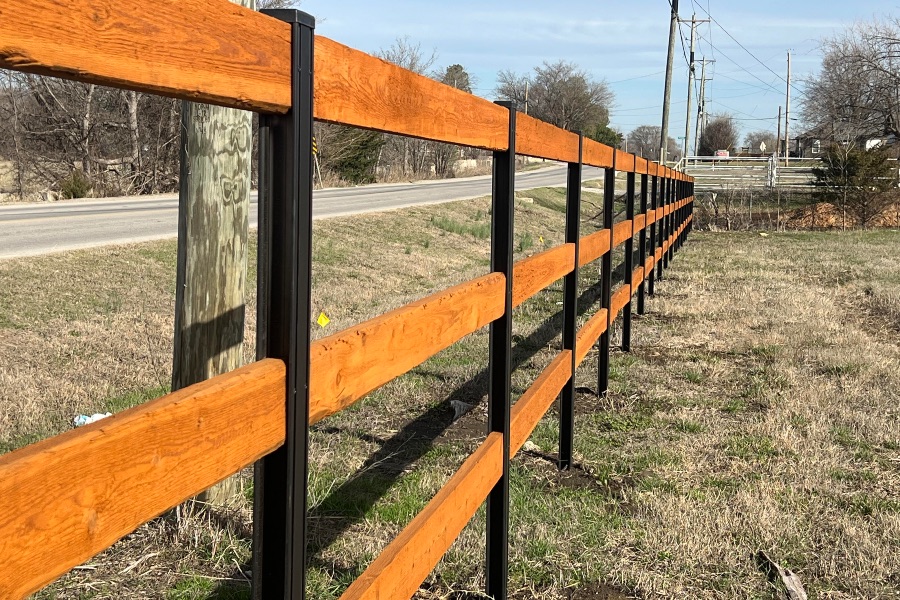All Categories
Featured
Choosing eco accountable fencing materials aids minimize your carbon impact and sustains preservation efforts. Let's check out some of the ideal green fence options that advertise sustainability while likewise supplying toughness and design.
Benefits: Bamboo needs marginal water, chemicals, and plant foods to grow. It is biodegradable, minimizing waste at the end of its life process. It is immune and also resilient to rot, guaranteeing long life with appropriate care. Considerations: Bamboo may not be ideal for areas with severe wintertimes or severe cold, as it can come to be weak and crack in freezing temperatures. 2. Recycled Materials Fencing. Fences made from recycled materials, such as post-consumer plastics, reclaimed wood, or recycled steel, are coming to be progressively popular in eco-conscious styles. These materials reduce waste, preserve resources, and lessen the need for the extraction of raw products, which is useful for the atmosphere. By repurposing existing products, you add to lowering the need for brand-new, energy-intensive production processes.
Benefits: Utilizing recycled materials helps divert waste from landfills, minimizes ecological influence, and can decrease your carbon impact. It is additionally a cost-efficient service sometimes. Factors to consider: The visual of recycled material fencings can vary, and some may not accomplish the very same all-natural look as traditional timber fencings. Lots of makers currently use layouts that reproduce the look of timber or rock. 3. Composite Secure fencing. Composite fence is made from a combination of timber fibers and plastic, commonly sourced from recycled content. This kind of fencing provides the appearance of wood with marginal maintenance, while additionally being eco-friendly. Composite products are immune and generally long-lasting to the components, lowering the requirement for regular replacement or treatment with chemicals.
![]()
Benefits: Composite fences are resilient, low-maintenance, and can be made from recycled content, helping in reducing waste. They do not call for hazardous chemicals for conservation, unlike treated timber. Considerations: While composite secure fencing is sturdy, it tends to be extra costly upfront compared to traditional wood. Nonetheless, its durability and low maintenance may make it an extra cost-efficient choice gradually. 4. Cedar and Redwood Fencing. Cedar and redwood are preferred options for environmentally-conscious secure fencing, as both materials are naturally sturdy, immune to degeneration, and require very little chemical treatments. These woods can be sustainably harvested from sensibly taken care of woodlands, guaranteeing their green status. They additionally have a natural beauty that many house owners appreciate, with abundant shades and structures that boost aesthetic allure.
Benefits: Cedar and redwood fences are durable, naturally pest-resistant, and have a reduced ecological influence when harvested sustainably. They additionally have a classic aesthetic and can mix seamlessly into all-natural landscapes. Considerations: While cedar and redwood are extra green than various other kinds of timber, they are still timber items and call for correct maintenance to avoid decay. The price may also be greater contrasted to other products. 5. Living Fences (Hedges and Shrubs) For those looking for a more all-natural and green option, living fencings, or hedges, are a superb choice. These are commonly created by growing thick bushes, trees, or climbing up plants to create a natural barrier. Popular choices for living fencings include bamboo, boxwood, and privet. These plants not only offer privacy but also soak up co2, aid with soil erosion, and assistance local wild animals.
Perks: Living fencings enhance air top quality, contribute to biodiversity, and supply an all-natural look that blends seamlessly with the landscape. They likewise lower environmental pollution and aid manage temperatures in your lawn. Factors to consider: Living fences need routine maintenance, such as trimming and watering, and might not be suitable for every single climate. They also call for time to establish prior to they can offer full privacy. 6. Rock and Brick Fence (Reclaimed) Stone and brick are extremely sturdy materials, and making use of redeemed stone or block can be an environment-friendly way to construct a fencing. By recycling these materials from old buildings or frameworks, you reduce the demand for brand-new sources and lessen waste. Stone and brick fencings are solid, need little upkeep, and provide a timeless aim to any type of home.
![]()
Benefits: Recovered rock and brick fences are incredibly long-lasting, low-maintenance, and give superb personal privacy and safety and security. They are also energy-efficient, as they aid manage temperature by acting as all-natural insulators. Considerations: Installation of rock and block fencings can be more labor-intensive and costly than other materials. Furthermore, these fencings might not be appropriate for all buildings as a result of the weight and the demand for appropriate setup. Final thought. Bamboo, recycled materials, composite fence, and cedar or redwood all supply lasting alternatives to conventional products. By choosing one of these sustainable fencing products, you're making a positive effect on the atmosphere while developing a lovely and practical exterior location.
- Bamboo Secure fencing. Bamboo is one of the most eco-friendly materials offered for fence. Bamboo fences are solid, naturally resistant to pests, and offer a beautiful, natural visual.
Benefits: Bamboo needs marginal water, chemicals, and plant foods to grow. It is biodegradable, minimizing waste at the end of its life process. It is immune and also resilient to rot, guaranteeing long life with appropriate care. Considerations: Bamboo may not be ideal for areas with severe wintertimes or severe cold, as it can come to be weak and crack in freezing temperatures. 2. Recycled Materials Fencing. Fences made from recycled materials, such as post-consumer plastics, reclaimed wood, or recycled steel, are coming to be progressively popular in eco-conscious styles. These materials reduce waste, preserve resources, and lessen the need for the extraction of raw products, which is useful for the atmosphere. By repurposing existing products, you add to lowering the need for brand-new, energy-intensive production processes.
Benefits: Utilizing recycled materials helps divert waste from landfills, minimizes ecological influence, and can decrease your carbon impact. It is additionally a cost-efficient service sometimes. Factors to consider: The visual of recycled material fencings can vary, and some may not accomplish the very same all-natural look as traditional timber fencings. Lots of makers currently use layouts that reproduce the look of timber or rock. 3. Composite Secure fencing. Composite fence is made from a combination of timber fibers and plastic, commonly sourced from recycled content. This kind of fencing provides the appearance of wood with marginal maintenance, while additionally being eco-friendly. Composite products are immune and generally long-lasting to the components, lowering the requirement for regular replacement or treatment with chemicals.

Benefits: Composite fences are resilient, low-maintenance, and can be made from recycled content, helping in reducing waste. They do not call for hazardous chemicals for conservation, unlike treated timber. Considerations: While composite secure fencing is sturdy, it tends to be extra costly upfront compared to traditional wood. Nonetheless, its durability and low maintenance may make it an extra cost-efficient choice gradually. 4. Cedar and Redwood Fencing. Cedar and redwood are preferred options for environmentally-conscious secure fencing, as both materials are naturally sturdy, immune to degeneration, and require very little chemical treatments. These woods can be sustainably harvested from sensibly taken care of woodlands, guaranteeing their green status. They additionally have a natural beauty that many house owners appreciate, with abundant shades and structures that boost aesthetic allure.
Benefits: Cedar and redwood fences are durable, naturally pest-resistant, and have a reduced ecological influence when harvested sustainably. They additionally have a classic aesthetic and can mix seamlessly into all-natural landscapes. Considerations: While cedar and redwood are extra green than various other kinds of timber, they are still timber items and call for correct maintenance to avoid decay. The price may also be greater contrasted to other products. 5. Living Fences (Hedges and Shrubs) For those looking for a more all-natural and green option, living fencings, or hedges, are a superb choice. These are commonly created by growing thick bushes, trees, or climbing up plants to create a natural barrier. Popular choices for living fencings include bamboo, boxwood, and privet. These plants not only offer privacy but also soak up co2, aid with soil erosion, and assistance local wild animals.
Perks: Living fencings enhance air top quality, contribute to biodiversity, and supply an all-natural look that blends seamlessly with the landscape. They likewise lower environmental pollution and aid manage temperatures in your lawn. Factors to consider: Living fences need routine maintenance, such as trimming and watering, and might not be suitable for every single climate. They also call for time to establish prior to they can offer full privacy. 6. Rock and Brick Fence (Reclaimed) Stone and brick are extremely sturdy materials, and making use of redeemed stone or block can be an environment-friendly way to construct a fencing. By recycling these materials from old buildings or frameworks, you reduce the demand for brand-new sources and lessen waste. Stone and brick fencings are solid, need little upkeep, and provide a timeless aim to any type of home.

Benefits: Recovered rock and brick fences are incredibly long-lasting, low-maintenance, and give superb personal privacy and safety and security. They are also energy-efficient, as they aid manage temperature by acting as all-natural insulators. Considerations: Installation of rock and block fencings can be more labor-intensive and costly than other materials. Furthermore, these fencings might not be appropriate for all buildings as a result of the weight and the demand for appropriate setup. Final thought. Bamboo, recycled materials, composite fence, and cedar or redwood all supply lasting alternatives to conventional products. By choosing one of these sustainable fencing products, you're making a positive effect on the atmosphere while developing a lovely and practical exterior location.
Latest Posts
Discover Why Chicago Drivers Prefer Montclare Auto Repair for Dependable Service and Significant Savings
Published May 24, 25
1 min read
Find the Greatest Auto Repair Deals in Montclare, Chicago
Published May 24, 25
1 min read
Picking the Right Roofing Shade: Influence On Power Performance
Published May 23, 25
1 min read
More
Latest Posts
Discover Why Chicago Drivers Prefer Montclare Auto Repair for Dependable Service and Significant Savings
Published May 24, 25
1 min read
Find the Greatest Auto Repair Deals in Montclare, Chicago
Published May 24, 25
1 min read
Picking the Right Roofing Shade: Influence On Power Performance
Published May 23, 25
1 min read